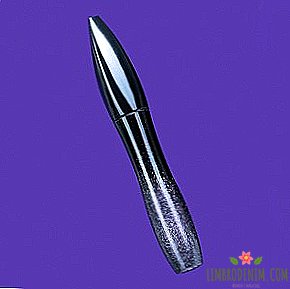Blew: How not to get sick from a draft or wind
When we are in a cool room or outdoors in the cold, the body includes mechanisms of thermoregulation. If the body is cold, it becomes goosebumps, begins to tremble. This is how the body's defense reaction manifests itself: the vessels narrow, reducing heat transfer, and small movements of the muscles help to warm up. In the case of a draft, the situation changes. We have found out exactly how this happens and what it threatens with experts: Olga Dekhtyarova, head physician of the Gemotest Laboratory, and a doctor of medical sciences, neurologist, and head doctor of the Doctor Choi clinic of eastern and traditional medicine Choi Yong Joon.

What is dangerous draft
A draft is an air flow that occurs in an almost closed space through openings opposite each other. When the body is in this stream, the air stream acts locally, that is, it is directed at a specific area of the body, such as the neck or lower back. Doctor Olga Dekhtyareva gives an example: if a vessel with a liquid is placed under a stream of cold water, the entire contents of the vessel will cool down after a while, much like the surface temperature of a human body will decrease imperceptibly during a draft. The latter can provoke an exacerbation of myositis (muscle inflammation), intercostal neuralgia, inflammation of the facial nerve, or exacerbation of chronic infections. For example, inconspicuous cooling activates the herpes virus that lives in the body, which attacks the nervous tissue - and blistering rashes appear along the affected nerve.
At the same time, neurologist Choi Yong-joon draws attention to the fact that a draft in a room or a cold wind outside do not cause illness by themselves. These are only factors that activate the problems already existing in the body. True, if health is in order, but I had to spend half a day at the computer in a sitting position with a tight neck, then even a small draft can strengthen muscle spasm - this will cause muscle inflammation. To repeat: the neck starts to hurt, not because it "blew", but from excessive muscle contraction, including as a reaction to the cold.
How to be treated if "blew out"
Myositis is an inflammation of one or several muscles, when the muscle fibers swell, a spasm occurs and the nerve endings are pinched. Behind the phrase "blew neck" is often covered precisely this problem. Sharp pain when moving or pressing is a common symptom that cannot be relieved by massage, compress or rubbing with a warming agent (the error of many patients). An anti-inflammatory anesthetic ointment will help to get rid of unpleasant sensations, but if the condition has not improved after a couple of days or has become worse, you should not postpone the visit to a neurologist. After the examination, it is necessary to undergo prescribed treatment, for example, a course of physiotherapy.
If the doctor determines that the nerve endings that enter the intervertebral holes are inflamed, and the pain intensifies and “shooting” in the arm or head appears, the diagnosis will be different - neuritis, that is, nerve inflammation (also called radiculopathy). Injections of nonsteroidal anti-inflammatory drugs (habitual ibuprofen and similar drugs), as well as pain and edema remedies, usually help in the treatment of the disease. In intercostal neuralgia, nerve endings cause pain along the entire length of the spine, particularly in the thoracic region. According to Olga Dekhtyarova, patients often get scared and confuse this problem with heart disease: there is pain in the chest, which then disappears, then increases during coughing, inhaling or changing the position of the body, breathing can be difficult. We described how to distinguish angina pectoris (pain associated with heart problems) from intercostal neuralgia. Treatment is reduced to pain relief and removal of inflammation with an anti-inflammatory agent.
Neuritis of the facial nerve is another disease, the cause of which may be reduced due to local cooling immunity (especially in cold weather): a spasm of blood vessels and muscles temporarily disrupts the power of the facial nerve, and it becomes inflamed. The facial nerve passes through very narrow channels in the bones of the face, so even minor inflammation and swelling lead to its compression, which causes symptoms of the disease. Usually unpleasant sensations appear behind the ear and gradually shift to the face and neck area. As a result, literally in a few days, it becomes difficult to control facial expressions, facial symmetry is noticeably disturbed, speech becomes slurred, and nervous tics are not excluded. Experts note that the disease can be protracted, and its severity and recovery time depend on which part of the nerve is damaged and how quickly treatment was started. At the onset of the disease, vasodilators and decongestants, B vitamins and painkillers are effective. From the second week, you can apply physiotherapy and do facial massage. In difficult cases, when there is no improvement within 8-12 months, an operation is prescribed.

Is it possible to catch a cold from a draft?
A positive answer to this question seems obvious - but it is wrong. We have already written that, for example, the cause of acute respiratory viral infections are viruses, and not a walk in windy weather, a draft in the office or an icy cocktail drunk in one gulp. Of course, if you constantly freeze, it is easier to get sick: the body simply spends more resources trying to keep warm, “forgetting” about the protective functions, and viruses have more chances for uncontrolled reproduction. True, usually for this is not enough one-time drafts or even wet feet. If you are still sick, we remind you that you do not need to treat a cold, you just have to wait for the body to defeat her, and alleviate the symptoms: high fever, sore throat, runny nose. Antiviral drugs for the treatment of ARVI does not exist, and the effectiveness of immunomodulars and immunostimulants to date has not been proven.
The same applies to the risk of "chilling" the bladder or kidneys - theoretically this is possible, but only if you spend several hours in the cold, preferably without moving and without clothes. However, in this case, big problems will begin not only with the kidneys. In other situations, it is almost impossible to reduce the temperature of internal organs, and inflammation of the bladder (cystitis) or kidney (pyelonephritis) is usually associated with a bacterial infection, kidney stones, certain medications or congenital abnormalities, but certainly not with the effects of cold.
Is there a "wind allergy"?
If the eyes are very watery in the wind, the skin of the face turns red and peels off, flows from the nose, a cough appears, but these symptoms quickly pass in the room (or any other place where there is no powerful stream of cold air), there is a great desire to write them off as "allergic to wind ". In fact, this is not quite true: we can talk about allergies or intolerances, but not the air movement itself, but particles it carries, such as dust. It turns out that the wind is not an allergen, but a provocateur of the existing problem. To confirm or exclude allergies with high accuracy, Olga Dekhtyareva recommends to undergo laboratory diagnostics - make a study using the ImmunoCAP method. If allergies are identified, the allergist-immunologist will select the appropriate therapy.
Is it true that women are freezing harder than men?
According to Dr. Choi Yong-joon, the female body is physiologically more sensitive to cold, so it’s more comfortable for women to stay in a slightly warmer room. Due to the complex mechanisms associated with estrogen hormones, the temperature of the skin of the hands and feet of women is lower than that of men - it is believed that all this is part of the low temperature recognition system necessary to protect the baby during pregnancy. The colder extremities create the feeling that it’s cold all over the body - by the way, gadgets are designed to help you quickly feel warmth or cold, affecting only the wrist.
June notes that these observations are not speculation: American scientists from the University of Utah came to this conclusion back in 1998. In the course of the experiment, it was also found that, as a rule, the female body has less heat emission: the metabolic level of an average woman is about 23% lower compared to that of men - this is due to hormonal differences and different body weights.
Often, women working in the office dress warmer than their male counterparts. This is not difficult to explain, given the results of the 2015 study, published in the scientific journal Nature Climate Change. In most office buildings, “comfortable temperature” is set according to outdated instructions from the 1960s, when experiments were conducted only with the participation of men. The “thermal model of comfort,” observed in the design and operation of office space, takes into account such factors as the level of insulation of clothes. But here there is a nuance: the model was developed for people in tight men's suits, and not for those who wear skirts, thin blouses and transparent tights - in general, the settings of air conditioners can be called sexist for now.
Photo:Veniamin Kraskov - stock.adobe.com, showcake - stock.adobe.com, fotofabrika - stock.adobe.com





